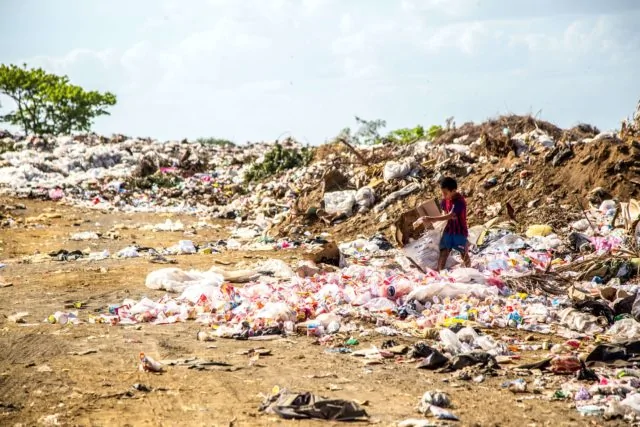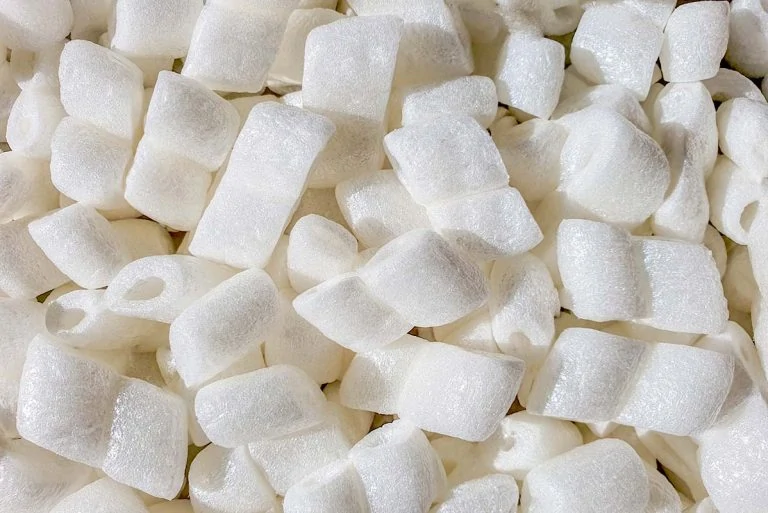What is the difference between non biodegradable and biodegradable material? Go through this article to get a clear picture and distinction between the two types of waste.
Difference Between Non-Biodegradable And Biodegradable Material
The primary difference between non biodegradable and biodegradable material lies in how it decomposes. At every tick-tock of the clock, various industries, factories, and farms around us produce billions of solid materials. Later on, these materials get shipped to the different consumption points where they are expected to serve their purpose.
Anything that exists around us is either a biodegradable material or a non-biodegradable material. From the plastic bottle that you use to pack your water to those paper documents on your office desk, everything has a side to pick.
Technology advancements have eased our lives by birthing an innovative form of life, but on the other hand, erratically affecting the environment and other life-systems. For instance, the plastic water bottles are convenient, but their disposal is a veritable demise to the environment.
The knowledge of the two forms of materials will significantly ensure that the environmental risks associated with waste disposal are averted.
Additionally, with the heightened ecological conservation awareness, it is quite crucial to understand the difference between non-biodegradable and biodegradable material.
What is Biodegradable Material?
A biodegradable material refers to any substance that can quickly decay or instead breakdown naturally. Agents that facilitate this natural breakdown process include bacteria, microorganisms, sunlight, air, soil, water, ozone, and many more natural agents.
The biodegradable materials are generally natural substances, and they happen to be non-toxic.
Biodegradable wastes are waste materials that get decomposed easily through natural factors. Abiotic elements, as well as other microorganisms, work together in breaking down the complex materials into simple organic matter which can become a part of the soil.
Decomposition of the biodegradable materials is beneficial to the soil as it increases its fertility as well as improves the soil structure.
However, it is vital to ensure that biodegradable waste is disposed of appropriately. The fact that biodegradable materials decay naturally, the mode of disposal would render them harmful to the environment.
Unplanned dumping of huge biodegradable waste piles may pose some severe threats to the environment, such as exposure to diseases or water pollution.
Examples of Biodegradable Material
The biodegradable materials are natural substances, mainly from plants and animals. These are vegetables, fruits, paper, and leather products, among others.
Biodegradable wastes are commonly composed of kitchen and food wastes, paper waste, green waste, as well as biodegradable plastics.
Other sources of biodegradable waste include sewage, human waste, as well as slaughterhouse waste.
See Related: 9 Best Ethical, Sustainable Gift Ideas
What is Non-biodegradable?
Have you ever seen materials that remain for quite a long time in the environment without breaking down? I bet maybe you have recalled some old plastic can that you once threw out of the window and to your amazement, later on, found it still in shape after a few years.
The non-biodegradable materials cannot be degraded by any natural or biological process, thus causing them to remain for quite a long period in the environment.
Non-biodegradable substances typically include inorganic substances, and not every content is eco-friendly. Besides, the fact that natural organisms can not decompose these materials makes them a dangerous source of environmental pollution.
It is undeniable that it is quite an uphill task to take care of the non-biodegradable waste. Ironically, the non-biodegradables are the most manufactured packaging materials, low cost, convenient to use, as well as readily available. Unfortunately, these materials do not add any value back to the environment once they become waste but rather pile up for thousands of years.
Examples of Non-biodegradable Material
The most common example of a non-biodegradable material is plastic. Plastics are common all around the globe and in any field. These plastics are manufactured in such a way that they exhibit strength and durability, which makes them harder to control after use.
For instance, such a small thing as glitter is essentially a type of microplastic that don’t biodegrade but instead exist for years polluting land and water.
Other examples include chemicals, metals, glass, polythene bags, and many more. However, it is crucial to consider metals as a unique option. Some metals are biodegradable, while others are not.
Some metals, such as magnesium, are easily absorbed by living organisms while other ferrous metals are easily degraded through oxidation; thus making them biodegradable. Other metals such as gold hardly react with natural processes, thus making it non-biodegradable.
Five Main Differences Between Biodegradable And Non-biodegradable Materials
- As earlier discussed, the main difference between non-biodegradable and biodegradable material stems from the definition. The biodegradable materials naturally degrade with time, facilitated by natural agents such as bacteria, air, water, soil, and many others. On the other hand, non-biodegradable materials do not decay naturally, and the natural agents of decomposition do not affect them.
- Concerning the rate of degradation, non-biodegradable materials can maintain their originality and fail to decompose, or the process might be too slow taking thousands of years. Even though the decomposition of a biodegradable material may not happen overnight, the rate of decay is much faster in comparison to non-biodegradable.
- At the very end, biodegradable substances break down and enter the biogeochemical cycles, which is eventually beneficial to the environment. Since the non-biodegradable substances do not break down naturally, they cannot become part of any biogeochemical cycles. This fact makes non-biodegradables to be toxic to the environment.
- The other difference between non-biodegradable and biodegradable material is the fact that biodegradable elements are organic substances, while most non-biodegradable materials are inorganic substances.
- It is easy to dispose of biodegradable materials as they decay and integrate with the soil while it is a different case with non-biodegradable products. It is quite hard and expensive to dispose of non-biodegradable waste since they have to be separated and collected to minimize pollution.
Well, the difference between biodegradable and non-biodegradable substances does not end there. How about their pollutants? How do biodegradable and non-biodegradable pollutants affect the environment?
Biodegradable And Non-biodegradable Pollutants
Life depends on a balanced environment or rather an ecosystem for development and growth. Once this balance gets tipped off, the survival of living organisms is huddled up. The disturbance, later on, grows into various disconnects within the environment affecting human life as well.
The amount of waste being heaped all around the world is continuously increasing. This increase is a notable fact once you tour around dumpsite and compare the current levels against previous years. Billions of wastes get produced each year while new products are in line to be a pile of garbage in the future.
These wastes result from the activities within our homes, industries, and businesses. Additionally, the increased population, more so within cities, is another factor that is facilitating the massive amounts of wastes. Well, some may argue that biodegradable materials are safer than non-biodegradable materials, but the fact is that massive wastes are an environmental problem.
Whether the waste is biodegradable or non-biodegradable, they both happen to be pollutants, thus harmful to the environment as well as human life. The difference between non-biodegradable and biodegradable material trickles down also to how the contaminants affect the environment. Therefore, let us look at how biodegradable and non-biodegradable materials pollute the environment.
Biodegradable Pollutants
Biodegradable pollutants can eventually break down into harmless components with time as they result from biodegradable waste. This waste might amount to be hazardous and potentially cause damage when they are in surplus amount or not properly dumped within the environment. Biodegradable pollutants can affect the environment in several ways.
The effects include:
- The biodegradable pollutants can produce enormous amounts of flora. If we don’t dispose of the waste properly, or if we leave them in the open, the microbial flora that is present around the waste heap can cause diseases in plants, animals, and humans.
- Another way in which biodegradable pollutants affect the environment is by their foul smell. During the process of decaying, organic materials generally produce a sharp foul smell which might make it uncomfortable to hang around within the surrounding environment.
- Biodegradable waste releases gases that contribute to the greenhouse effect. Biodegradable wastes decompose into organic carbon which later on breaks down to water and carbon dioxide. Increased carbon dioxide in the environment contributes to greenhouse gases.
- A significant presence of biodegradable waste in water bodies affects marine life directly or indirectly. When the waste reaches the water bodies, the microbial flora may cause diseases to marine life. Additionally, when organic waste decomposes into organic carbon, it can encourage the presence of oxygen-consuming organisms.
- Biodegradable dumpsite might as well happen to be breeding grounds for vectors and transporters which may spread communicable diseases. Examples of these vectors include rats, houseflies, and mosquitoes, among other agents.
Non-biodegradable Pollutants
Non-biodegradable pollutants result from the non-biodegradable materials. Some of the effects of non-biodegradable pollution include:
- By the fact that non-biodegradable waste does not break down quickly, they might, therefore, lead to landfills upon continuous disposal. The dumps render the land unproductive for any other activity since the waste might stay for hundreds of years without breaking down.
- The non-biodegradables, more so plastics, pose a threat since the burning of plastics releases toxic gases into the environment. Most people switch to this option to curb the landfill challenge. The exposure of these gases to the environment facilitates the greenhouse effect and may also cause acidic rain once the falling droplets react with the gas particles.
- In addition to the toxic gases, inhaling these fumes may lead to respiratory tract infections as well as other diseases such as tuberculosis. Therefore, we can all agree, burning them to minimize landfills is not a good option either.
- When non-biodegradable materials are exposed to air and water for quite an extended period, they release toxic pollutants. For instance, plastics may oxidize and issue out poisonous salts which are carcinogenic. If the toxins find their way into water supplies or enter the food chain, the aftermath would be fatal for humans, animals, and plants as well.
- Disposal of non-biodegradable wastes into water bodies may also disturb aquatic life as well as propel eutrophication.
Reformative Steps to Take
Effective and efficient handling of waste ought to be emphasized. It should not only be the government’s or environmental organizations’ duty, but rather every living soul. If we all played a part in waste management, it would significantly reduce the environmental pollution risks and raise the hopes of a better tomorrow brought to life.
The first step to take is to ensure that we separate biodegradable and non-biodegradable wastes. Afterward, one can throw the biodegradable waste into a pit and then covered with soil. The pit ensures that the waste decomposes and adapts to the soil without polluting the environment.
With the non-biodegradable waste, the most efficient way of handling it is using the three R (3R) concept. This concept is a trend that aims at minimizing environmental pollution through non-biodegradable waste. The 3 ‘R’s stand for reducing, recycle, and reuse.
We have seen that these materials do not quickly decompose; therefore, reusing and recycling the materials will be a great way of minimizing pollution as well as more productive. Instead of throwing the plastic into the garbage pit, the same plastic can be melted and used to create another plastic product. The 3R concept is a win-win situation for both the manufacturers as well as environmental conservers.
Conclusion On The Difference Between Non-biodegradable And Biodegradable Material
The terms biodegradable and non-biodegradable generally refer to the effect a substance might have on the environment. Besides, understanding the difference between non-biodegradable and biodegradable material will remarkably reduce the pollution levels as well as encourage the use of biodegradable materials.
Has this post offered useful insights on degradable and non-degradable material? Give us your thoughts in the comments area.
Related Resources
- 53 Important Facts About Landfills You Need to Know
- 6 Key Environmental Issues in Japan You Should Know
- 5 Best Reusable K Cup Options to Become More Eco-Friendly
Green Coast is a renewable energy community solely focused on helping people better understand renewable energy technologies and the environment.











